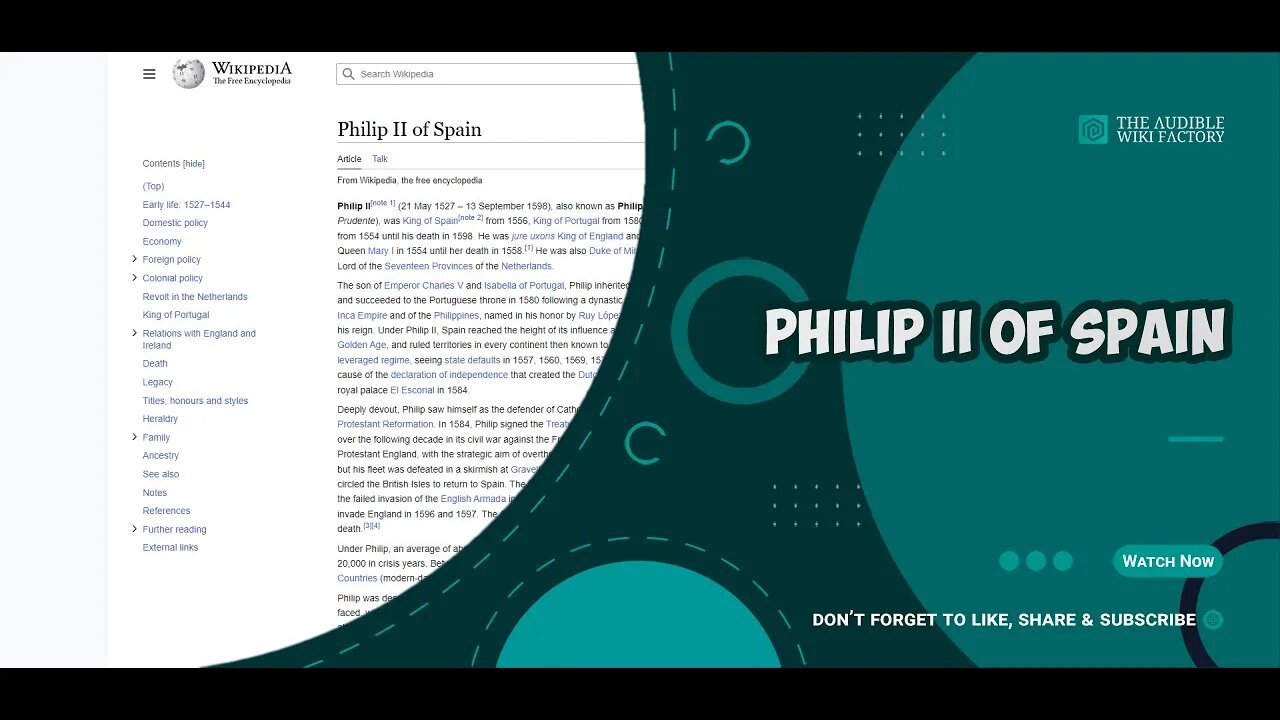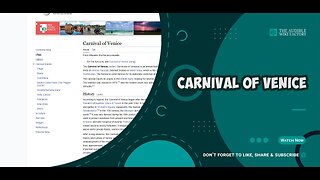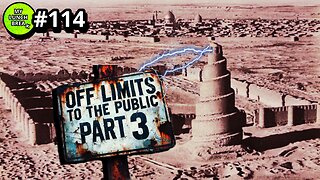Premium Only Content

Philip II, also known as Philip the Prudent, was King of Spain from 1556, King of Portugal from
Philip II, also known as Philip the Prudent (Spanish: Felipe el Prudente), was King of Spain from 1556, King of Portugal from 1580, and King of Naples and Sicily from 1554 until his death in 1598. He was jure uxoris King of England and Ireland from his marriage to Queen Mary I in 1554 until her death in 1558. He was also Duke of Milan from 1540. From 1555, he was Lord of the Seventeen Provinces of the Netherlands.
The son of Emperor Charles V and Isabella of Portugal, Philip inherited his father's Spanish Empire in 1556 and succeeded to the Portuguese throne in 1580 following a dynastic crisis. The Spanish conquests of the Inca Empire and of the Philippines, named in his honor by Ruy López de Villalobos, were completed during his reign. Under Philip II, Spain reached the height of its influence and power, sometimes called the Spanish Golden Age, and ruled territories in every continent then known to Europeans. Philip led a highly debt-leveraged regime, seeing state defaults in 1557, 1560, 1569, 1575, and 1596. This policy was partly the cause of the declaration of independence that created the Dutch Republic in 1581. Philip finished building the royal palace El Escorial in 1584.
Deeply devout, Philip saw himself as the defender of Catholic Europe against the Ottoman Empire and the Protestant Reformation. In 1584, Philip signed the Treaty of Joinville funding the French Catholic League over the following decade in its civil war against the French Huguenots. In 1588, he sent an armada to invade Protestant England, with the strategic aim of overthrowing Elizabeth I and re-establishing Catholicism there, but his fleet was defeated in a skirmish at Gravelines (northern France) and then destroyed by storms as it circled the British Isles to return to Spain. The following year Philip's naval power was able to recover after the failed invasion of the English Armada into Spain. Two more Spanish armadas unsuccessfully tried to invade England in 1596 and 1597. The Anglo-Spanish war carried on until 1604, six years after Philip's death.
Under Philip, an average of about 9,000 soldiers were recruited from Spain each year, rising to as many as 20,000 in crisis years. Between 1567 and 1574, nearly 43,000 men left Spain to fight in Italy and the Low Countries (modern-day Belgium, Luxembourg, and the Netherlands).
Philip was described by the Venetian ambassador Paolo Fagolo in 1563 as "slight of stature and round-faced, with pale blue eyes, somewhat prominent lip, and pink skin, but his overall appearance is very attractive. ... He dresses very tastefully, and everything that he does is courteous and gracious." Philip was married four times; all his wives predeceased him.
EARLY LIFE: 1527–1544
A member of the House of Habsburg, Philip was the son of Emperor Charles V, who was also king of Castile and Aragon, and Isabella of Portugal. He was born in the Castilian capital of Valladolid on 21 May 1527 at Palacio de Pimentel, which was owned by Don Bernardino Pimentel (the first Marqués de Távara). The culture and courtly life of Castile were an important influence in his early life. He was entrusted to the royal governess Leonor de Mascareñas, and tutored by Juan Martínez Siliceo, the future archbishop of Toledo. Philip displayed reasonable aptitude in arts and letters alike. Later he would study with more illustrious tutors, including the humanist Juan Cristóbal Calvete de Estrella. Though Philip had good command over Latin, Spanish, and Portuguese, he never managed to equal his father, Charles V, as a polyglot. While Philip was also an archduke of Austria, he was seen as a foreigner in the Holy Roman Empire. The feeling was mutual. Philip felt himself to be culturally Spanish; he had been born in Castile and raised in the Castilian court,...
LINK TO ARTICLE: http://en.wikipedia.org/wiki/Philip_II_of_Spain
TAGS: Philip II of Spain, Sons of emperors, Spanish Renaissance people, Spanish people of the Eighty Years' War, Spanish infantes, Spanish art patrons, Rulers of the Habsburg Netherlands, Remarried royal consorts, Regents of Spain, Princes of Asturias, Philippine dynasty, People of the French Wars of Religion, People of the Anglo-Spanish War (1585–1604), People from Valladolid, Mary I of England, Garter Knights appointed by Mary I, Knights of Santiago, Jure uxoris kings, Grand Masters of the Order of the Golden Fleece, Grand Masters of the Order of Montesa, English pretenders to the French throne, Dukes of Montblanc, Dukes of Milan, Counter-Reformation, Burials in the Pantheon of Kings at El Escorial, British monarchs buried abroad, 16th-century Spanish monarchs, 16th-century Portuguese monarchs, 16th-century Navarrese monarchs, 16th-century monarchs of Naples, 16th-century Kings of Sicily
#GeneralKnowledge #AudibleWikiFactory #Audible #Wikipedia #PhilipIIofSpain
-
 13:12
13:12
The Audible Wiki Factory
1 year agoThe Carnival of Venice is an annual festival held in Venice, Italy. The carnival ends on Shrove
514 -
 2:33:15
2:33:15
Tundra Tactical
2 hours ago $2.49 earnedLuis Valdes Of GOA Joins The Worlds Okayest Firearms Live Stream!!!
10.6K -
 1:03:41
1:03:41
Man in America
11 hours agoAre Trump & Musk the COUNTER-ELITES? w/ Derrick Broze
20.4K15 -
 LIVE
LIVE
DLDAfterDark
2 hours ago $2.32 earnedDLD Live! SHTF Handguns! Which Would You Choose?
654 watching -
 1:50:38
1:50:38
Mally_Mouse
5 hours agoSaturday Shenanigans!! - Let's Play: Mario Party Jamboree
31.3K -
 1:13:00
1:13:00
Patriots With Grit
9 hours agoWill Americans Rise Up? | Jeff Calhoun
24.9K10 -
 14:55
14:55
Exploring With Nug
9 hours ago $8.88 earnedWe Found Semi Truck Containers While Searching for Missing Man!
40.4K7 -
 27:57
27:57
MYLUNCHBREAK CHANNEL PAGE
17 hours agoOff Limits to the Public - Pt 3
74.8K57 -
 38:07
38:07
Michael Franzese
9 hours agoLeaving Organized Crime and Uncovering Mob in Politics: Tudor Dixon and Michael Franzese
70.1K14 -
 2:42:54
2:42:54
Jewels Jones Live ®
2 days agoAMERICA IS BACK | A Political Rendezvous - Ep. 111
58.9K46